Keynote Speakers

Delivering on the Digital Dream? The UK’s Journey towards Digitalisation in the Infrastructure Sector – from BIM to Digital Twins
Dr. Jennifer Schooling OBE, FICE, MIMMM
Professor of Digital Innovation and Smart Places
Co-Director, Decarbonised, Adaptable Resilient Transport National Research Hub
Anglia Ruskin University, Cambridge, United Kingdom
Short Biography
Prof Jennifer Schooling is Professor of Digital Innovation and Smart Places at
Anglia Ruskin University, and until February 2024 was the Director of the
Cambridge Centre for Smart Infrastructure and Construction (CSIC) at the
University of Cambridge. She is passionate about changing the way the built
environment sector views data and digitalisation, to become a vital asset in its
own right, and as a tool for tackling the key challenges facing our places,
including climate change, resource constraint, resilience and inequity. She
contributed to the Data for the Public Good report, which created a major shift
in the UK’s approach to infrastructure data, and was a co-author of the Gemini
Principles. She is now co-Director of the UK’s National Research Hub for
Decarbonised Adaptable Resilient Transport (DARe), which is co-funded by
the Department for Transport to find viable pathways and solutions for a
transition to an adaptable, resilient, net zero transport system.
Jennifer leads the Digital Cities for Change project, which explores the sociotechnical aspects of
digitalisation at the city scale, focussing on governance and ethical innovation to enable delivery of digital
solutions for public value creation. She is part of a collaboration with AI@Cam exploring how to develop
ethically-rooted approaches to use of AI in the public sector. She also carries out research on
decarbonisation of construction through data, and was lead author of the Carbon Reduction Code for the
Built Environment. She is on the Infrastructure Client Group’s Digital Transformation Task Group, and
the Institution of Civil Engineers’ Decarbonisation Community Advisory Board.
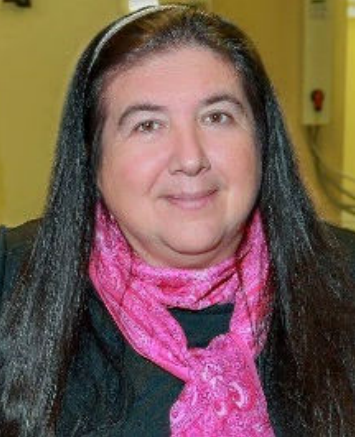
Unlocking the Future: 30 Years of Innovation at the Crossroads of Visualization,
Immersion, and Digital Twins
Carolina Cruz-Neira, Ph.D.
Agere Chair Professor in Computer Science; Member of the National Academy of Engineering
University of Central Florida, Orlando, FL, USA
Abstract
The talk starts with a brief overview of over 30 years of hands-on experience at the vibrant intersection of
visualization, immersion, and modeling & simulation (M&S). This talk unveils how these disciplines
have converged to create a powerful gateway to digital twins, transforming discovery, insights, processes,
and decision making. The talk will discuss several the innovative projects and initiatives that have driven
this evolution and discuss how leveraging these technologies across diverse fields has accelerated the
successful integration and deployment of digital twins. However, many of these successes and potential
solutions risk being overshadowed by the growing pressure to rapidly launch "new and innovative" digital
twin technologies and applications which may still be in emergent stages. This presentation shares “fromthe trenches” experiences on developing technologies and applications that have been critical to
accelerate the deployment, integration, and acceptance of digital twins to yield successful outcomes. In
particular, the presentation discusses visualization’s critical role in the emerging digital twins and AI
ecosystem. The presentation focuses on where the true innovation opportunities are today and how to get
there. The talk’s intention is to understand the complexity, gaps and challenges we face, while revealing
insights that can guide us toward more sustainable, impactful solutions in the digital twin landscape.
Short Biography
Dr. Carolina Cruz-Neira, a member of the National Academy of Engineering, is
a pioneer in the areas of virtual reality (VR), interactive visualization, and
digital twins. Her work has translated to standard tools in industry, government,
and academia. She is known world-wide for being the creator of the CAVE VR
system, for transferring research into practice by spearheading several OpenSource initiatives, such as VRJuggler, and by leading entrepreneurial initiatives
to commercialize research. She has over 150 publications and, together with her
collaborators, has been awarded over $400 million in grants, contracts, and
donations. She is recognized for founding successful VR research centers: the
Virtual Reality Applications Center at Iowa State University, the Louisiana
Immersive Technologies Enterprise, and the Emerging Analytics Center at the
University of Arkansas. She serves in international technology boards, government technology advisory
committees. One of her recent roles was being part of the National Academies report on Foundational
Research Gaps and Future Directions for Digital Twins. She enjoys intersecting her research with the arts
and the humanities through dance performances and museum installations. She has been named one of the
top innovators in virtual reality and one of the top three greatest women visionaries in VR. She is the first
person inducted to the National Academy of Engineering for contributions to immersive technologies and
VR, she has been inducted to the Unites States Congressional Record for her technical contributions on
driving American competitiveness in the global economy, she is a member of the IEEE VR Academy, an
IEEE Fellow, an ACM Computer Pioneer, an AWE XR Hall of Fame member, and a Modeling and
Simulation Hall of Fame; She received the IEEE VR Achievement Award and the International Digital
Media & Arts Society Distinguished Career Award among many national and international recognitions.
She has given numerous keynote addresses, and she advises governments on how VR can help to give
industries a competitive edge leading to regional economic growth. She has appeared in numerous TV
shows and podcasts as an expert on her discipline and several documentaries have been produced about
her life and career. Currently, Dr. Cruz co-leads the UCF Digital Twin Initiative.
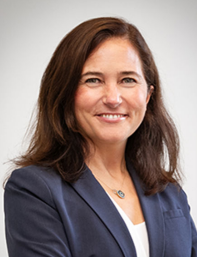
Digital Twins and AI towards Autonomy of the Built Environment
Burcu Akinci, Ph.D., F.ASCE, F.AAAS
Hamerschlag University Professor and Department Head of Civil & Environmental Engineering
Member of the National Academy of Construction
Carnegie Mellon University, Pittsburgh, PA, USA
Abstract
The last decade has been truly transformational with many technological advancements, such as Internetof-Things, Industry 4.0, Artificial Intelligence and Automation. Digital twins are necessary to enable
context‐driven AI and autonomy in the built environment. Context matters for buildings and infrastructure
systems since each building and infrastructure system is unique and many changes occur to these systems
over their long (many decades) life‐cycles. And yet, not many comprehensive digital twin applications
exist in the Architecture/Engineering/Construction/Facility and Infrastructure Management. This
presentation will provide specific research examples that highlight Carnegie Mellon’s interdisciplinary
research approaches in developing digital twins coupled with AI in enabling proactive operations and
management of facilities and infrastructure systems. It will also highlight the significance of such an
approach towards achieving self-aware autonomous facilities and infrastructure systems.
Short Biography
Dr. Burcu Akinci is Hamerschlag University Professor and department head of
Civil & Environmental Engineering at Carnegie Mellon University. She is also
a member of the National Academies of Construction, ASCE Fellow and
AAAS Fellow. Dr. Akinci’s research interests include modeling and reasoning
about digital twins of buildings and infrastructure systems to streamline
construction and infrastructure operations. She and her team specifically focus
on investigating utilization and integration of building information models with
data capture technologies, such as 3D imaging and other sensors, and develop
approaches to support proactive and predictive operations and management and
to enable autonomy in the built environment.
Short Biography
Dr. Akinci is the recipient of the ASCE Peurifoy Award in 2023, the IAARC
Tucker-Hasegawa Award in 2021, the ASCE Computing in Civil Engineering award in 2020 and the
ASCE Walter L. Huber Civil Engineering Research Prize in 2007. Dr. Akinci has two patents, and one
provisional patent and 80 refereed journal publications and 110 conference publications. She has given
over 100 invited presentations and keynotes, and co-edited books on CAD/GIS Integration and on
Embedded Commissioning. She co-founded and is the Chief Innovation Officer at the LeanFM
Technologies, which received the 2017 Pittsburgh Business Times Innovation Award.
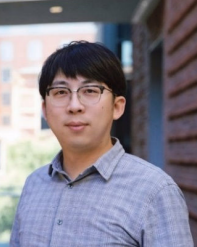
Mobility Digital Twins with AI Agents and Networks
Jiaqi Ma, Ph.D.
Associate Professor, Samueli School of Engineering
Director, FHWA/UCLA Center of Excellence on New Mobility and Automated Vehicles
University of California Los Angeles, Los Angeles, USA
Abstract
Mobility Digital Twins (MDT) are rapidly evolving into sophisticated tools for simulating and optimizing
smart city systems. In this talk, a novel MDT framework built on the integration of the concepts of AI
Agents and AI Networks will be introduced. Within this framework, AI Agents serve as intelligent digital
replicas of individual entities, such as travelers, drivers, vehicles, capable of learning, decision-making,
and generating behavioral patterns at varying resolutions to capture nuanced cross-domain interactions.
These agents dynamically adjust to evolving conditions in the AI Networks and can simulate complex
behaviors that are critical for realistic mobility modeling. Concurrently, AI Networks represent a multilayered digital ecosystem that encompasses both dynamic components, such as traffic flows and sensor
data, and static elements of the built environment, including roadway networks, utilities, and charging
infrastructures. Learning and generative techniques play a critical role in building, maintaining, and
updating these interconnected layers. They enable efficient model synthesis and data integration across
various scales and levels of fidelity, supporting both (near) real-time analysis and offline simulation. The
talk will delve into selected technical challenges, including the integration of models and data across
diverse domain, scales and resolutions, as well as the utilization of hybrid generative modeling to achieve
modeling efficiency and scalability. The talk will also showcase digital twin efforts that facilitate various
use cases, such as intersection safety management and tele-work/tele-X for transportation demand
management.
Short Biography
Professor Jiaqi Ma is Director of FHWA/UCLA Center of Excellence on New
Mobility and Automated Vehicles, an associate professor at the UCLA Samueli
School of Engineering, director of the UCLA Mobility Lab, and associate
director of UCLA Institute of Transportation Studies. He has led and managed
many research projects funded by the USDOT, NSF state DOTs, and other
federal/state/local programs covering areas of vehicle automation, smart
infrastructure, shared mobility, large-scale smart system modeling and
simulation, and artificial intelligence in vehicles and transportation. He is
editor in chief of the IEEE Open Journal of Intelligent Transportation Systems,
and associate editor of Nature Scientific Reports, Journal of Intelligent
Transportation Systems, ASCE Open, and Transportation Research Part C. He
is Chair of the Transportation Research Board (TRB) Standing Committee on Vehicle-Highway
Automation, and member of TRB Standing Committee on Artificial Intelligence and Advanced
Computing Applications. He also serves on the Board of Governors of the IEEE Intelligent
Transportation Systems Society
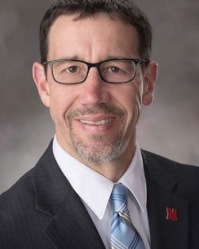
Digital Twins, the Built Environment, and Basic Research – What, When, Where and Why
Daniel G. Linzell, Ph.D., P.E., F.ASCE, F.SEI
Leslie D. Martin Professor, University of Nebraska Lincoln, Lincoln, NE, USA
Director, NSF Division of Civil, Mechanical and Manufacturing Innovation
Abstract
The recently published report on Digital Twins (DT) by the National Academies of Science, Engineering
and Medicine, entitled “Foundational Research Gaps and Future Directions for Digital Twins” and funded
in part by the Directorate for Engineering at the National Science Foundation, recommended areas of DT
research need and focus specific to some federal agencies and identified potential crosscutting research
focus areas. When the outcomes of this effort are viewed through the lens of both (1) the researchers
advancing built environment DT technologies and (2) the entities who could support those advancements
in the context of a rapidly changing federal research funding landscape, several questions arise. Namely:
• What defines built environment basic DT research now and in the future?
• When will entities who traditionally support these efforts be able to address some of the NASEM
report recommendations?
• Where can researchers find resources to support their work in the immediate future?
• Why is the continuation of this research important and how can its importance be conveyed to
end users?
This presentation will attempt to answer some of those questions.
Short Biography
Dr. Daniel G. Linzell is the Associate Dean for Graduate and International
Programs and the Leslie D. Martin Professor of Civil and Environmental
Engineering at the University of Nebraska-Lincoln (UNL). He is currently on
loan to the National Science Foundation where he served as the Director of the
Division of Civil, Mechanical and Manufacturing Innovation (CMMI) in the
Directorate for Engineering (ENG). CMMI’s FY ‘24 budget was over $225M
and, to date, the Division is charged with advancing the future of
manufacturing, the design of innovative materials and building technologies,
infrastructure resilience and sustainability, and tools and systems for decisionmaking, robotics and controls.
From August of 2013 to September of 2018, Dr. Linzell was the Voelte-Keegan Professor and Chair of
UNLs Department of Civil Engineering. He was an Assistant, Associate and the inaugural John A. and
Harriette K. Shaw Professor of Civil Engineering at the Pennsylvania State University from 1999-2013.
The emphasis of Dr. Linzell’s research is structural engineering, with specific foci including structural
health monitoring; response of building and bridge systems to extreme loads, specifically blast and
impact; steel structures; the design and behavior of bridges during construction and under service loads;
and advanced structural analysis. His research group has published over 75 peer-reviewed, archival
journal papers over 50 refereed conference proceedings articles. He teaches courses in bridge engineering,
steel design, structural analysis, infrastructure resiliency, and structural health monitoring.
Dr. Linzell’s professional services include: co-Chairing the America Society of Civil Engineers (ASCEs)
Structural Engineering Institute’s (SEI) Education and Leadership Committee (ELC); sitting on ASCEs
Board Strategic Advisory Council Subcommittee: Reimagining ASCE, the SEI Advisory Council, and on
the SEI Futures Fund Board; being a member of ASCE’s Committee on Education and their
Collaborative Innovation Team; and being the immediate past-Chair of the Structural Stability Research
Council. He is Fellow of ASCE and SEI.
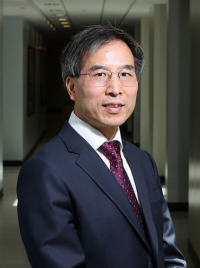
Genda Chen, Ph.D., P.E., F.ASCE, F.SEI, F.SPIE, F.ISHMII, F.TGI
Professor and Director of the Center for Intelligent Infrastructure
Missouri University of Science and Technology (Missouri S&T), Rolla, MO
Abstract
Building and civil infrastructure assets have been managed using a database since 1970 and with the aid
of Building Information Modeling (BIM) since 1992 for value engineering and as-built information. In
recent years, digital twin (DT) has been developed to support asset management. This presentation will
briefly review unique characteristics of civil infrastructure, envision a multidimensional digital twin of the
built environment on a university campus, and set a stage of workshop discussion items to enable the
development and implementation of national digital infrastructure initiatives. Specific features of the
multidimensional digital twin include a framework of DT modules (both open-sourced and secured) in
three hierarchical tiers: region, asset, and system; a new concept of the degree of digital twinning
(DODT); a new concept of augmented DT to support urban planning, and a layered integration of
multifunctional models to simulate and predict responses and behavior in the built environment. While
the asset and system DTs focus on the lifecycle management of buildings and infrastructure systems, the
region DT addresses diverse modeling approaches for a community-level management of the built
environment. The DT framework introduces foundational spatiotemporal analysis in multiple scales to
couple nonstructural with structural building components and connect the built environment to planning
constructions. To allow the value-driven digital replication of a physical twin at different levels, the
campus case study illustrated a DODT of eight for building and infrastructure planning, condition
assessment of building envelopes, construction management for efficiency and quality, damage/cost
scenario studies under earthquake events, energy harvesting efficiency, environmental planning for flood
zone susceptibility, master planning for green space development, and security protocol development.
Short Biography
Dr. Genda Chen is Professor and Abbett Distinguished Chair in Civil
Engineering, Director of the Center for Intelligent Infrastructure, and Director
of INSPIRE University Transportation Center at Missouri S&T. Between 1993
and 1996, Dr. Chen was a bridge consultant with Steinman Consulting
Engineers, New York, NY. Since 1996 when joining Missouri S&T, Dr. Chen
has authored or co-authored about 500 products, including 234 journal
publications, 20 keynote lectures, and six patents, in the areas of structural
health monitoring (SHM), structural control, structural and robotic dynamics,
computational and experimental mechanics, life-cycle assessment and
deterioration mitigation of infrastructure, multi-hazards assessment and
mitigation, transportation infrastructure preservation and resiliency. His
publications have been cited for over 10,000 times, with an h-index of 56 and
an i10-index of 202. He chaired the 9th International Conference on Structural Health Monitoring of
Intelligent Infrastructure (SHMII-9), St. Louis, MO, on August 4-7, 2019. He received the 2025 American
Society of Civil Engineers (ASCE) Charles Pankow Award for Innovation, the international 2019 SHM
Person of the Year award, the 1998 National Science Foundation CAREER Award, the 2004 Academy of
Civil Engineers Faculty Achievement Award, and the 2009, 2011, and 2013 Missouri S&T Faculty
Research Awards. He is a Fellow of ASCE, the International Society for Structural Health Monitoring of
Intelligent Infrastructure (ISHMII), Structural Engineering Institute (SEI), the International Society for
Photonics and Optics (SPIE), and Taylor Geospatial Institute (TGI). He is an Intelligent Section Editor of
the Sensors journal and Vice President of the U.S. Panel on Structural Control and Monitoring.

Follow Center for Intelligent Infrastructure